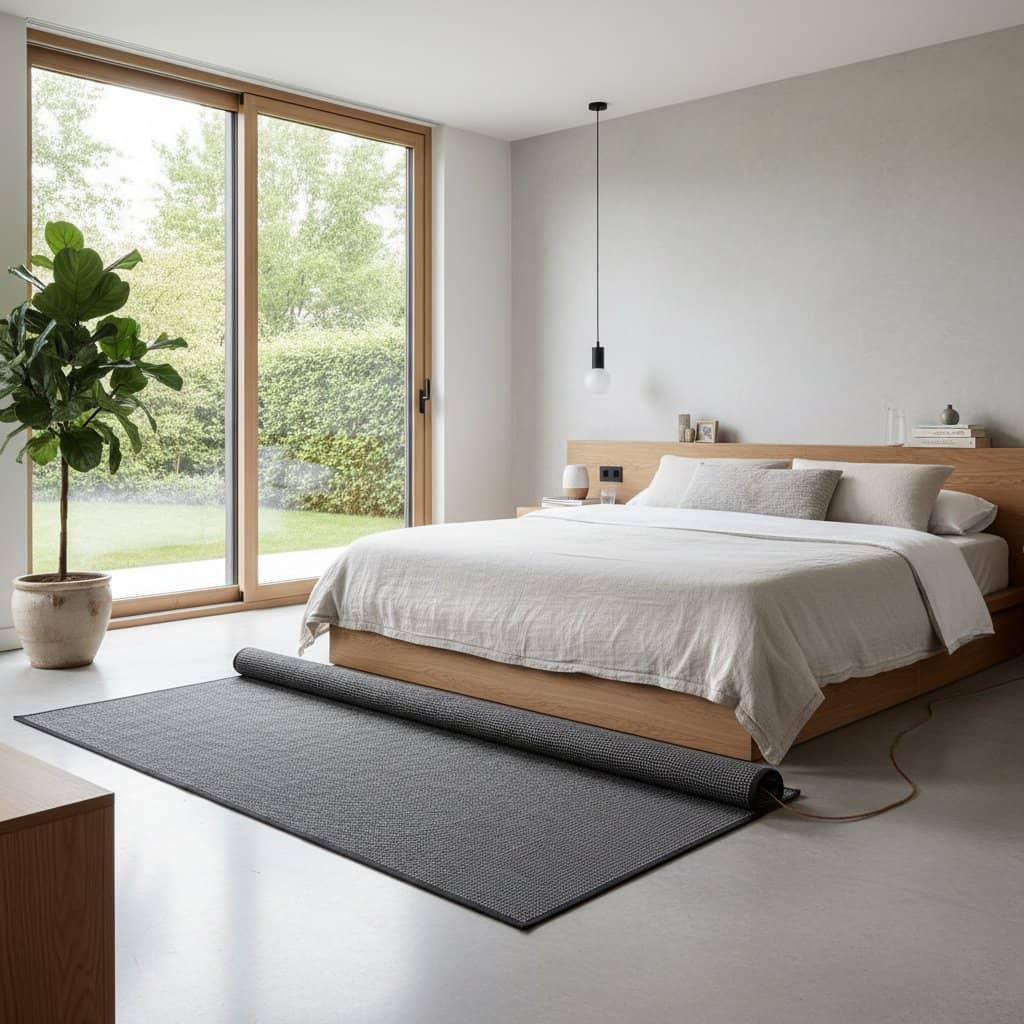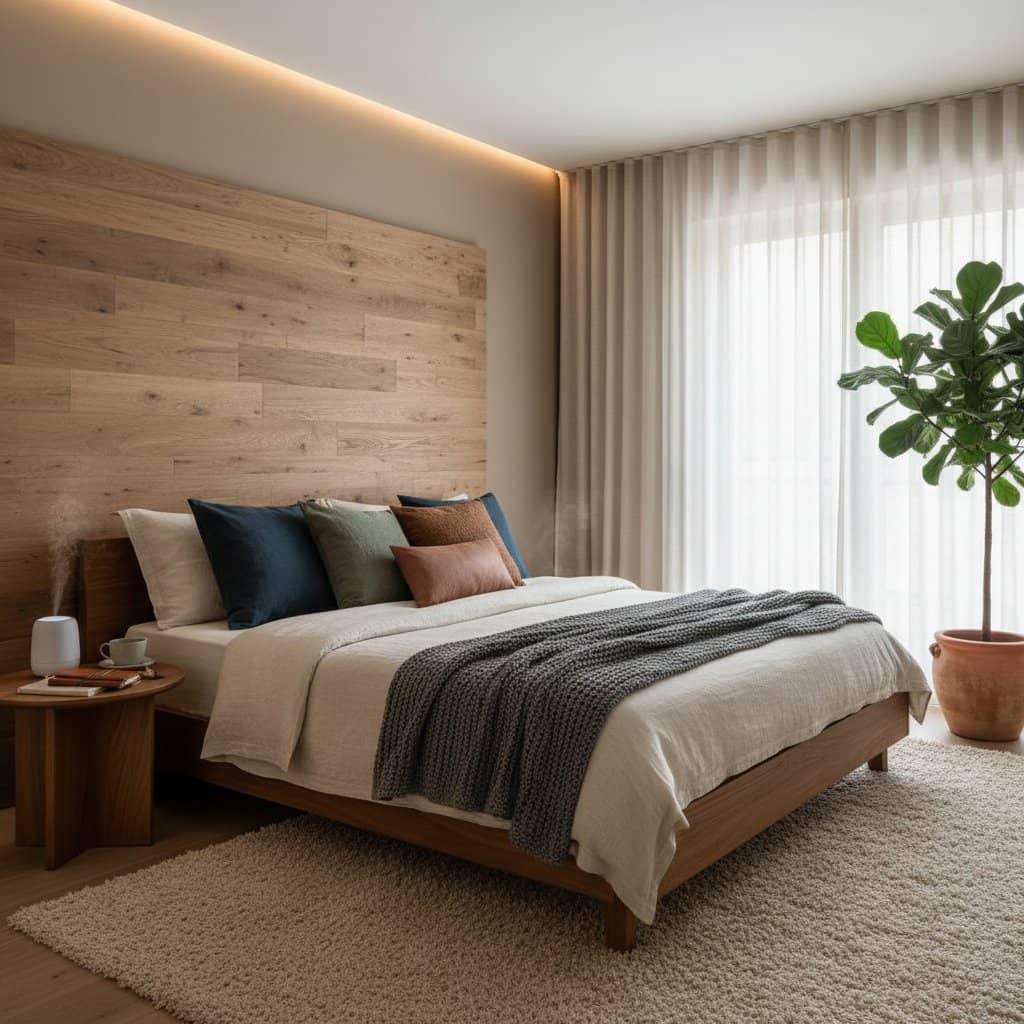Wabi-Sabi Textures Elevate Japandi Bedroom Design
You know that quiet sigh of relief when you walk into a room that feels both calm and lived-in? That’s the essence of a Japandi bedroom shaped by wabi-sabi textures. It’s not about perfection. It’s about comfort, honesty, and the small irregularities that make a space feel grounded. Think of a linen duvet that wrinkles just enough, a clay lamp that shows the maker’s hand, or a floorboard with a faint knot you can trace with your toe. These details tell a story far more soothing than any showroom shine.
Why Texture Matters
In a design style that blends Japanese simplicity with Scandinavian warmth, texture is what keeps minimalism from turning sterile. Wabi-sabi honors imperfection, while Japandi values clean lines. Together, they rely on tactile surfaces to balance restraint with humanity. A smooth wall next to a nubby woven rug or a sleek oak frame paired with a rough plaster finish creates contrast that feels intentional rather than accidental. The room breathes, and you sense that someone truly lives there.
Smart Texture Pairings to Try
-
Raw Plaster Walls
Forget perfect paint finishes. A hand-troweled plaster wall gives depth to even the palest neutral. Light moves differently across an uneven surface, shifting gently through the day. It’s a quiet backdrop that encourages you to slow down, not stare at every mark. -
Linen Bedding
Crisp cotton may look tidy, but linen feels alive. Its visible weave and natural creases add a casual elegance that fits the Japandi mood. Clients often say they sleep better surrounded by materials that breathe and soften with use. -
Wood With Character
Skip the flawless boards. Choose oak, ash, or cedar with visible grain and the occasional knot. A matte finish lets the wood’s story show through. You might even find yourself admiring how the light grazes those tiny imperfections each morning. -
Ceramic Lighting
A table lamp or pendant made of hand-formed clay brings a subtle wabi-sabi note. The glaze might be uneven, or the shape slightly off-center, and that’s exactly what makes it warm. It adds an artist’s touch without shouting for attention. -
Woven Accents
Jute, seagrass, and rattan baskets or rugs bring softness underfoot and texture to otherwise smooth surfaces. They balance the coolness of stone or plaster with a natural rhythm. You can feel the handmade quality even from across the room. -
Layered Fabrics
Combine a wool throw with a cotton coverlet or a slubbed pillow against a smooth headboard. The subtle contrast keeps the neutral palette interesting. It’s like adding depth to a photograph without changing the subject.
Living with Imperfection
Once you embrace wabi-sabi textures, you stop fussing over every tiny flaw. The chipped edge of a pottery cup or the uneven weave of a basket becomes part of the story. This shift in mindset brings peace to your bedroom, and to your morning routine. You stop chasing perfection and start noticing how materials age gracefully. A scuffed floor or frayed linen hem no longer feels like a failure, but evidence that life happens here.
Enjoying Your New Space
A Japandi bedroom rich with wabi-sabi texture invites you to slow down, rest, and connect with the tangible world around you. It doesn’t demand upkeep or decoration, just appreciation. Each surface, from the plaster wall to the woven rug, offers a small sensory reward. You wake up surrounded by calm, and each imperfect detail quietly reminds you that beauty often hides in the simplest touch.



